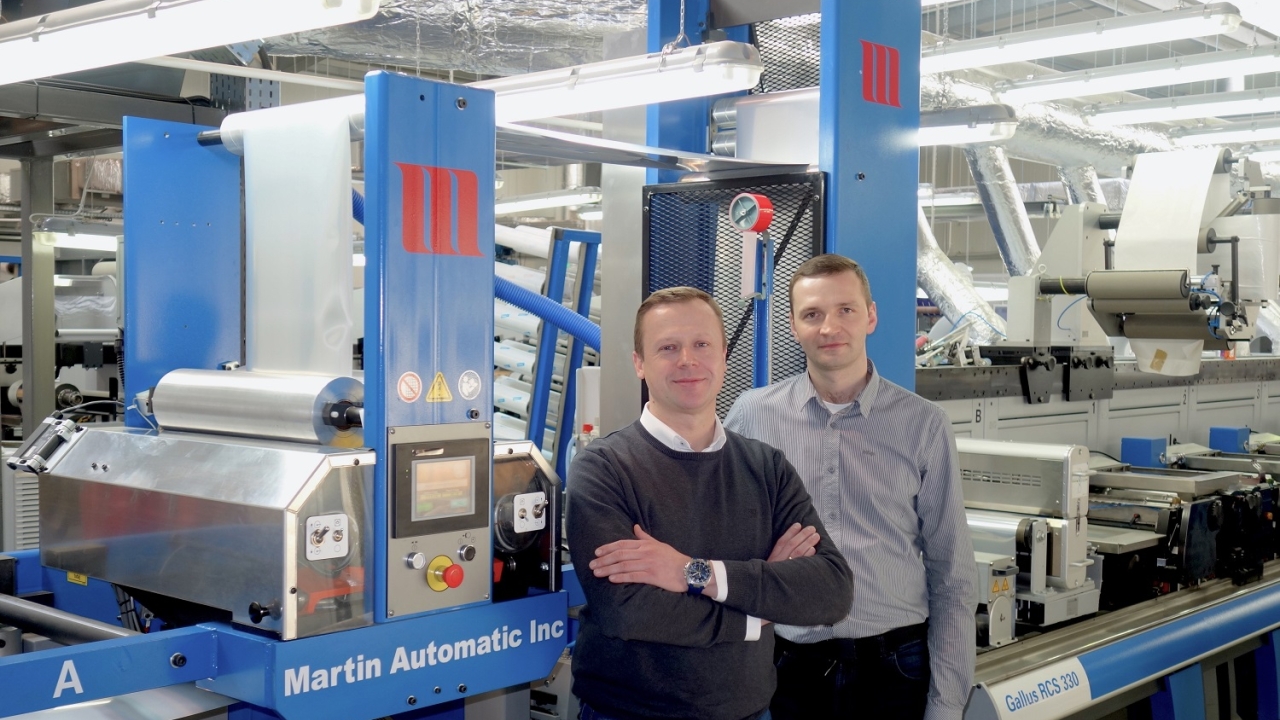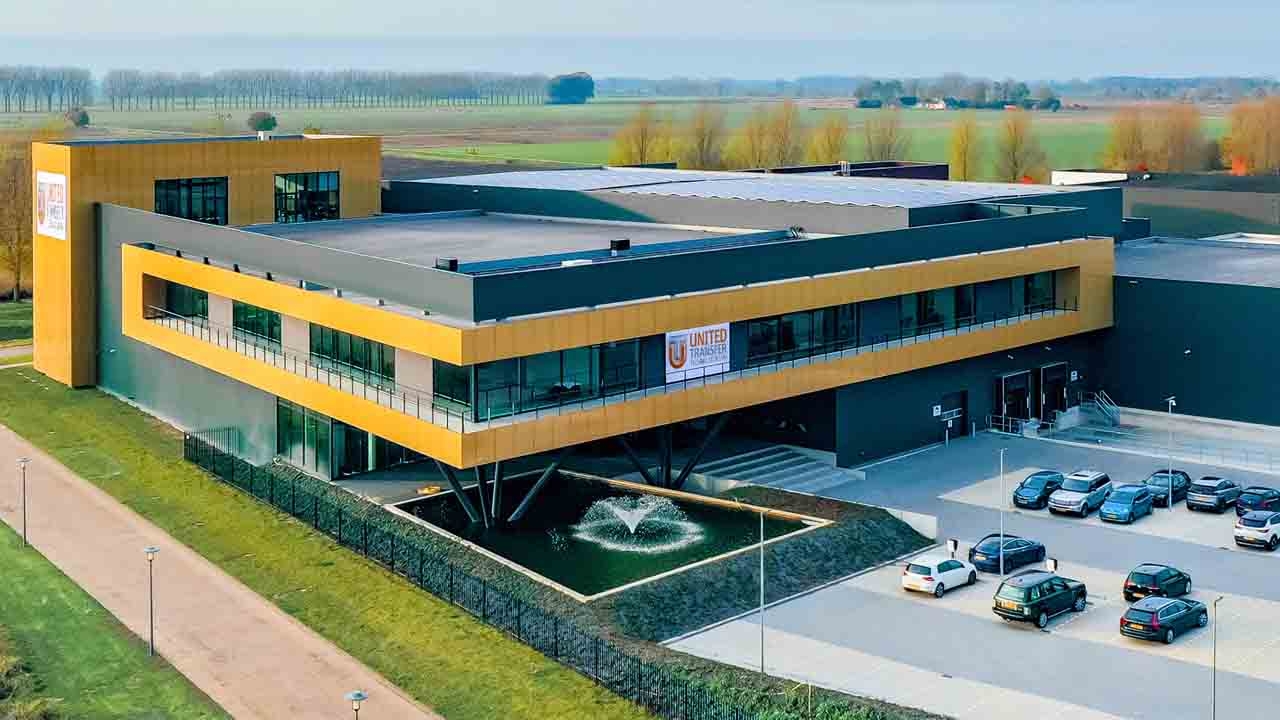Mal-Pol boosts productivity on Gallus RCS 330 with Martin Automatic
Mal-Pol, based in Olesin near Warsaw, has fitted Martin Automatic technology to its Gallus RCS 330 press in order to minimize waste.

This has seen it add an MBS automatic unwind/butt splicer and an LRD automatic transfer rewinder to its 10-color UV flexo press, which also has two screen print units, cold foil and varnish capability. The press was installed in 2016 to produce labels using a variety of substrates including laminates for tubes and sachets, self-adhesive stock, and unsupported film from PP to PE and PET.
Key to the investment for Mal-Pol was the facility of the equipment to handle tube laminate material. With the Gallus needing to change rolls on this job every 750-800 meters, it can lead to as many as 60 rolls changes per shift. Grossing up these numbers, the Martin Automatic technology is handling up to 40,000 roll changes per year of this heavy-duty material. On lighter PS labelstocks, where there are more meters per roll, the number would be more like 6,000 changes per year.
Both Martin Automatic machines are specified to handle tube material as well as opaque and transparent PS labelstocks. They have a 430mm maximum web width capability and can meet the top running speed of the RCS press at 150m/min, with the facility to handle 76mm and 150mm inner diameter cores. The MBS can unwind rolls up to 1016mm diameter and features integrated roll loading, motorized roll auto-side-lay, and the tube laminate package, which includes a splice-prep fault system to support the operator, and the ability to use 50mm wide splice tape, which is typically used with thick laminated films where higher web tension is applied in the printing process. The LRD can rewind rolls to a maximum diameter of 800mm, and features a lay-on roller for smooth surface material.
Mal-Pol director Maciej Malesa said: ‘Because the items we produce on the Gallus are all top-end, the substrates are expensive, so we need to keep waste to a minimum. This is only possible with automated roll changing at both ends of the press.’
The selection of Martin Automatic technology was based initially on the experience of one of Mal-Pol’s operators when he was working at another company. He gave the Martin equipment a glowing recommendation that prompted Mal-Pol to investigate what the American manufacturer had to offer.
Leszek Zelazny, print manager at Mal-Pol, added: ‘We have seen a major improvement in productivity on the Gallus since we installed the Martin Automatic equipment, especially on the tube laminate jobs – in fact we should not consider running this type of work without the automation.
‘We have seen a 20 percent improvement in the efficiency of the Gallus line, and managed to reduce our waste levels by around six percent, which is very satisfying.’
Mal-Pol plans additional investments in its QI department, inspection rewinders and a bigger ink kitchen to serve the additional presses it intends to install.
Stay up to date
Subscribe to the free Label News newsletter and receive the latest content every week. We'll never share your email address.

